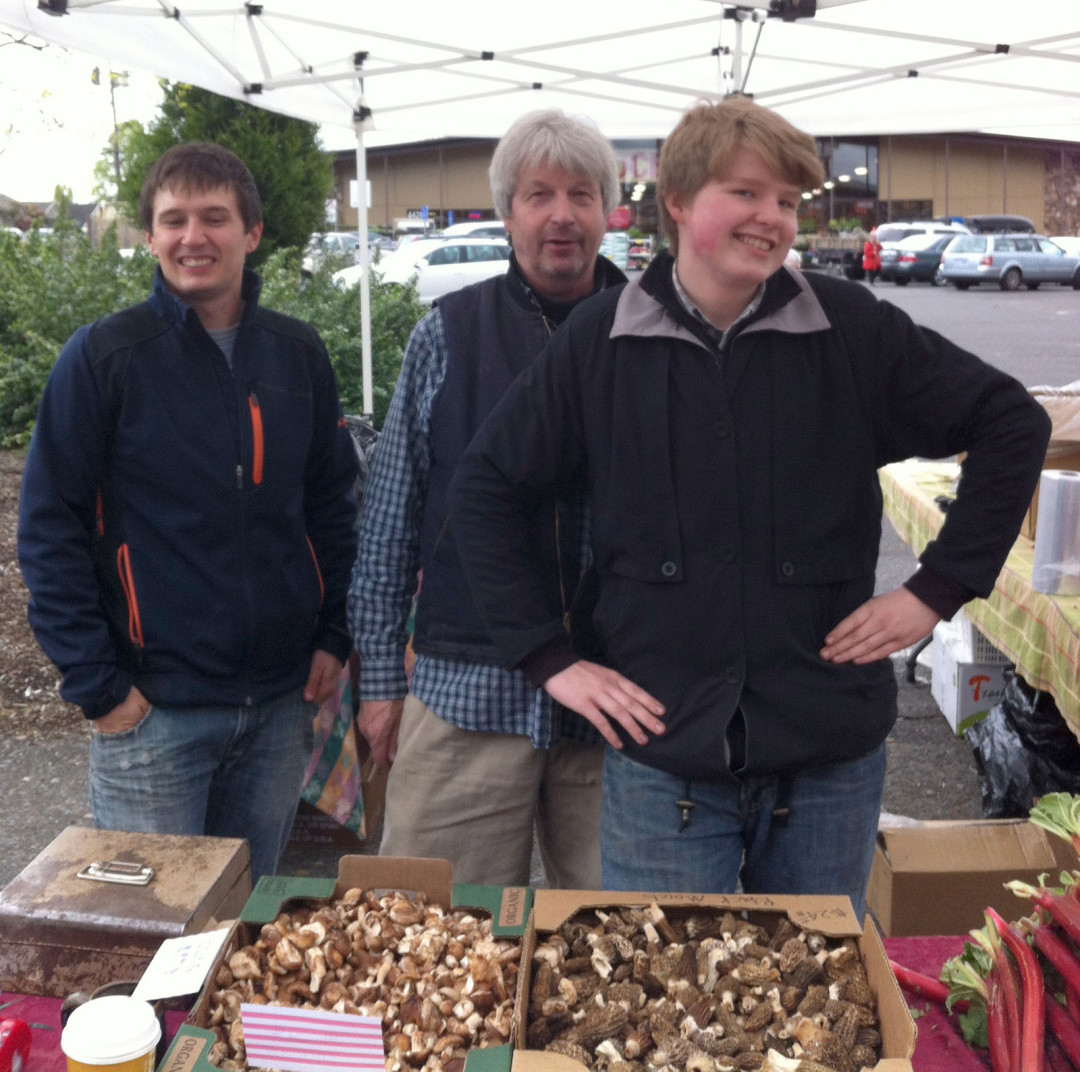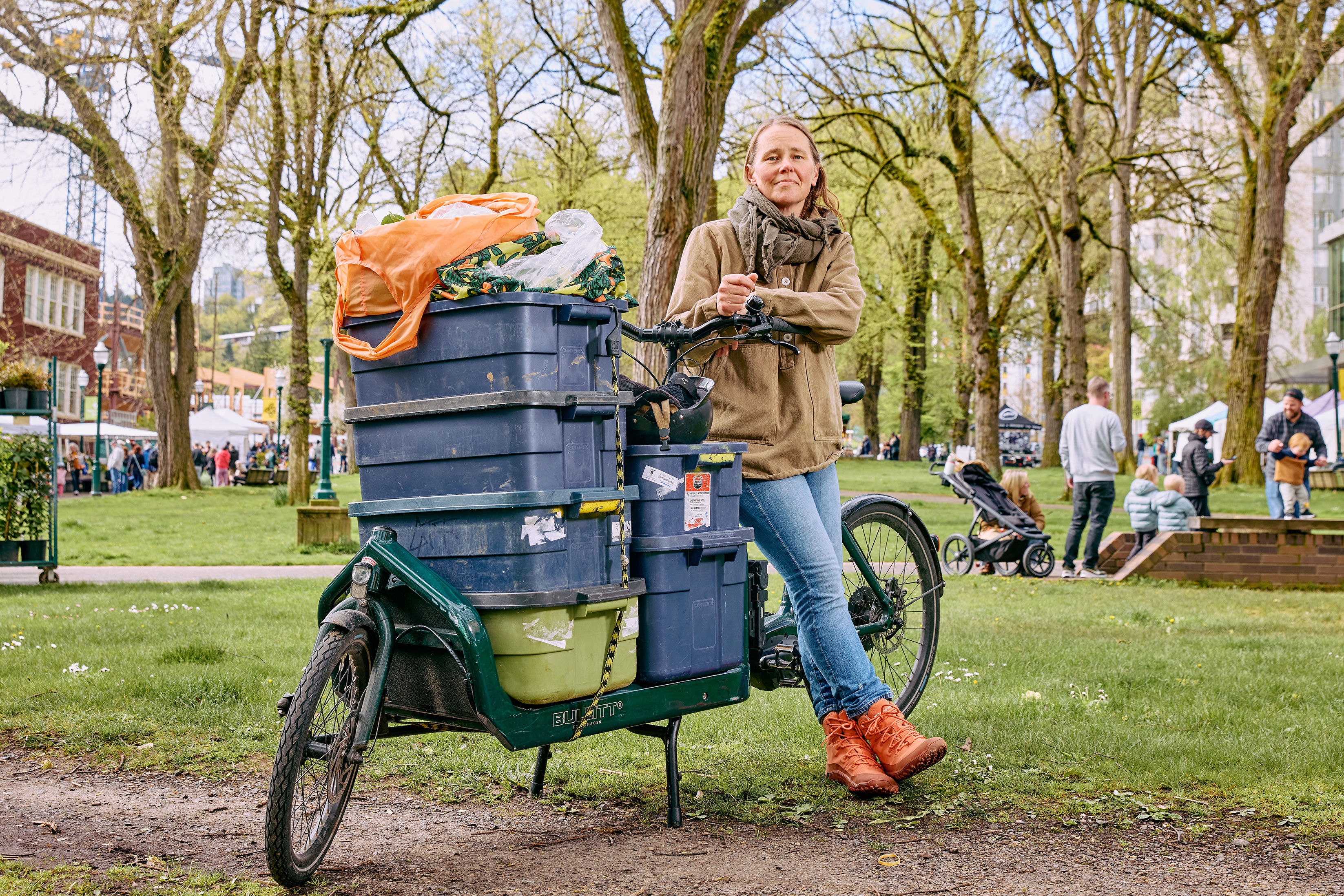Morel Mushroom Mania

A springtime trio of foods with a lightning quick lifespan: morel mushrooms (left), fiddlehead ferns (top right), and collard raab. Sauteed and eaten together, they are a medley of fresh forest tastes.
Image: Kristin Belz
Mushrooms might be one of the more misunderstood foods around. The common mushroom found everyday at the grocery store – the white button – is not particularly interesting, though it is appreciated by many of us (and detested by a good number as well, who, even as adults, will pick a pizza or salad free of any of the unsightly offenders).
But in the spring, beyond the grocery store, in the forests of the northwest, mushrooms tell a whole other story, and morels are a good place to start. In Oregon, there are five or six periods of the year when morel mushroom hunting is fruitful (to mix metaphors, as mushrooms are not fruit but fungi), but spring is prime time for morels. You'll find them at many farmers markets in the coming weeks.
At the Hollywood Farmers Market this past weekend, mushroom maniac Lars Norgren and his sons Gino and August were selling a selection of wild and cultivated mushrooms while also patiently educating mushroom novices like me. Morel mushrooms grow nationwide, but are prolific in the Pacific Northwest. Gino told me that while foragers in the Midwest would have daylong morel-hunting contests to pick, say 170 morels, in our region, one might find the same number in a single hour.

Do you know the mushroom men? Lars Norgren (center) and sons Gino and August know mushrooms. Here they are at the Hollywood Farmers Market with black morel mushrooms in the box at right.
Image: Kristin Belz
The morel is unusual in that it has a hollow interior and honeycombed exterior. It's also relatively easy to recognize and not easy to mistake for a poisonous wild mushroom, but it's still never a good idea to forage without a true expert to guide you; wild poisonous mushrooms are deathly dangerous.
But with people like Gino's dad Lars who are obsessed with mushrooms and make it their living to provide them for others, there's no need to forage for yourself. The Norgren's recently had black morels in abundance at their market stand. Black morels typically are picked in areas that have been clearcut three or four years before.
Other types of morels grow in other natural circumstances:
- Fire morels grow where there is a "fresh burn" – a forest that burned within the past year or so.
- Natural morels grow in the forest, and are distinctive in being double walled.
- Yellow morels might show up alongside a trail, and often are larger than the typical 2-4 inches of other morels.
Morels can be "buggy" and "gritty," but with a quick wash (see below), they're ready to go. And did a little dirt ever hurt anyone? Lars reminds us that our bodies are an ecosystem, with only a small portion of the DNA inside us actually belonging to us humans and the rest coming from various bacteria, microbes, and whatnot (to use my scientific term).
Chef Scott Dolich (of Park Kitchen and Bent Brick) gave these instructions for morel preparation in Ashley Gartland’s book Dishing Up Oregon:
“Submerge the morels in a bowl of cold water and agitate them gently to dislodge any grit. Drain them in a colander and pat dry immediately.” Slice off the stems and cut as desired – into bite-size pieces, in his case, since he likes to pickle morels into a “Morel Mojo” sort of a briney mix that he chops in the food processor and mixes with olive oil into a not quite smooth, relish-like consistency.
The easiest presentation for the washed and ready morels, however, is just to slice them in half lengthwise and give them a sauté in some butter. Play around with some logical additions, such as:
- finely chopped onion, garlic, or shallots (saute these in the pan first, then add the mushrooms)
- chopped parsley
- more butter!
- some white wine
- a touch of cream
- a bit of salt or soy sauce as desired.
The morels we had recently were plenty rich and flavorful without any additions, though. They tasted like the proverbial “salt of the earth” without anything but the butter we cooked them in. Alongside their springtime cousins, fiddlehead ferns and raab, they were even better, though.
For more information about morels (and other wild mushrooms), check out David Arora's definitive pocket guide, All the Rain Promises and More.




